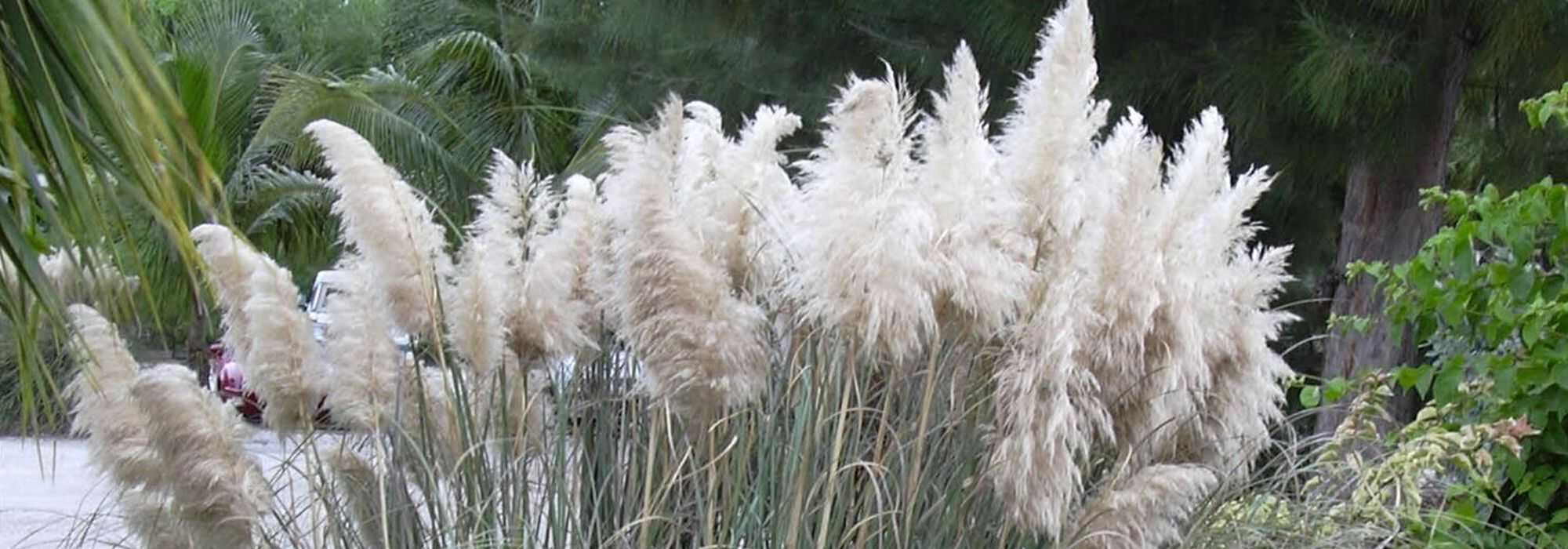
Pampas grass, Cortaderia: planting, care
Contents
Pampa herb in a nutshell
- Pampas grass is one of the most architectural grasses but also the most invasive: it has officially been added to the list of invasive plants that can no longer be sold since April 2023.
- Monumental and graceful, it produces at the end of summer striking plumes that are very elegant and silky, silvery-white or pink
- Perennial and hardy, easy to grow in sun in ordinary soil
- It provides structure to sunny, dry, windy and arid parts of the garden
- Simply spectacular when planted in large groups, as a specimen or in a flower bed with bushes
A word from our expert
Very fashionable in our gardens in the 1970s, Pampas grass or Cortaderia is one of the most majestic ornamental grasses but probably also the most invasive. This large herbaceous plant bears fine foliage that undulates at the slightest breeze, topped at the end of summer by large plumes. Held proudly upright, Pampas grass’s flowering lightens all natural compositions and stands as one of the most beautiful grass flowerings.
Pampas grass flowers take on soft, pastel colours and remain attractive even when dried, whether left in the garden or used as decoration in the home. The most common is Cortaderia selloana with its elegant silvery-white plumes borne on stems over 1.8 m tall. Also appreciated are Cortaderia selloana ‘Rosea’ and ‘Rendatleri’, two pink forms, and Cortaderia selloana ‘Pumila’, a variety with more moderate growth.
Pampas grass is a virtually foolproof plant that can grow almost anywhere and requires almost no maintenance, apart from controlling its invasive nature, which has already led to bans in some countries.
Description and botany
Botanical data
- Latin name Cortaderia, Gynerium
- Family Poaceae
- Common name Pampas grass,
- Flowering August to December
- Height 1 to 5 m
- Exposure Sun, partial shade
- Soil type All
- Hardiness -15°C and beyond
Cortaderia, also called Pampas grass, which is also known as Gynerium, is a perennial grass belonging to family Poaceae, like oats or wheat. Native to New Zealand and the vast meadows of South America from which its common name derives, it grows on fallow land, in wet and sandy areas. Escaped from gardens where it was very fashionable in the 1970s, notably in coastal regions of Brittany, Pampas grass proves invasive, causing significant ecological disruption and threatening native flora.
The genus includes around twenty species, including Cortaderia selloana and its cultivars, which is the most widespread. Cortaderia richardii, also called “Pampas grass richardii”, is smaller and earlier than species selloana.
This large perennial herbaceous plant forms large dense, erect tufts with a slightly arching habit, from 0.7 m for rare small varieties to 3 m high, sometimes up to 5 m when in flower with nearly as much diameter at ground level. Its imposing size suits spacious gardens. It can be invasive in mild climates and hard to contain, so planting always requires careful consideration.
Foliage deciduous or evergreen in mild climates forms a tough, fountain-like clump that rustles at the slightest breeze, made of linear, very tapering, rough leaves with very sharp edges curling at the tips. These leaves, 1 to 3 m long and about 1 cm wide, are green to blue-green, sometimes, as in cultivar ‘Aureolineata’, bright green striped with yellow. Foliage is marcescent: it withers on the plant and persists without falling.
From the heart of this gramineous growth, large erect, feathery panicles stand proudly at the tips of the long culms in late summer and persist throughout winter. Carried on sturdy, cylindrical stems highly resistant to wind sometimes reaching 3 m high, they are 30–60 cm long. These bright spikes, very compact and silky, are formed of numerous small spikelets. Usually pure white to creamy white with a silvery sheen, they are a delicate pink in Cortaderia selloana ‘Rosea’ or purplish pink in ‘Rendatleri’.
Once faded, these light plumes remain elegant and highly decorative throughout the off-season and are easily used in fresh or dried bouquets.
Pampas grass is a dioecious species, meaning male and female flowers are separate. Both are required for reproduction. If seed set occurs, female plumes fill with very many airborne seeds ready to be dispersed by wind, sometimes over 25 km, which explains the particularly invasive nature of this perennial.
Pampas grass is an undemanding grass, hardy to around -10 to -15°C, wind-resistant and easy to grow in sun or partial shade, in ordinary or even poor soil, although it prefers rather rich, moist soils.
Given its large growth, its use is best suited to large gardens, although varieties exist not exceeding 1.2 m in height. With its clean, elegant appearance, it always brings lightness and movement and benefits from being planted in groups or in a mixed border, among trees and bushes.
Read also
Grasses: which variety to choose?Main species and varieties
Pampas herb is appreciated for its imposing size and its large feathery spikes, most often silvery. Cortaderia selloana is now declinate into several varieties, more compact, with pink flowers or variegated foliage.
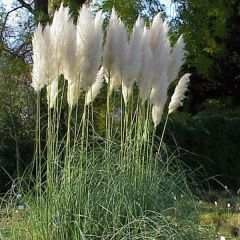
Cortaderia selloana
- Flowering time October to December
- Height at maturity 1,80 m
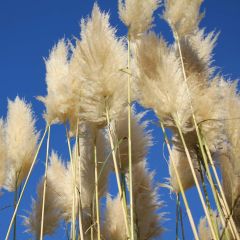
Cortaderia selloana Sunningdale Silver -Pampas Grass
- Flowering time September to December
- Height at maturity 2 m
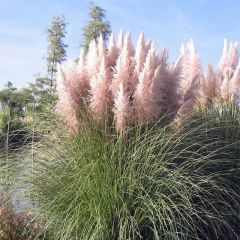
Cortaderia selloana Rosea - Pink Pampas Grass
- Flowering time September to December
- Height at maturity 1,80 m
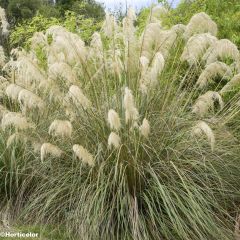
Cortaderia richardii - Compact Pampas Grass
- Flowering time July, August
- Height at maturity 2 m
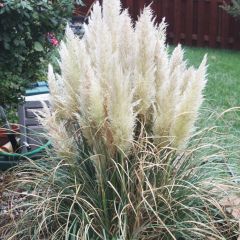
Cortaderia selloana Pumila
- Flowering time September to December
- Height at maturity 1,20 m
Discover other Cortaderia
View all →Available in 1 sizes
Planting
Where to plant pampas grass?
Originating from regions with wet winters and hot summers, pampas grass particularly likes sandy areas and windswept seaside gardens exposed to sea spray. It therefore spread quickly along the Breton coast. It is a sturdy and relatively hardy grass that tolerates -10 to -15 °C in well-drained soil. It is better to protect it from severe cold and plant it in a sheltered spot in climates with harsh winters and heavier frosts.
Not a demanding perennial, it will be content with almost all soil types, even poor, dry or wet, sandy or saline soils, except for very heavy ground that retains water in winter. It is drought-tolerant, even accepting semi-arid conditions, and will grow in full sun or partial shade. It will, however, be more vigorous in cool but very free-draining soil.
Give it space to grow, because in favourable conditions, its plumes can reach 4 or 5 m!
With its very exotic appearance, airy spikes and light foliage, pampas grass is an architectural grass. It commands attention in all gardens, perhaps excluding the smallest, most natural and wild, as well as very contemporary, modern and minimalist spaces.
The tallest varieties are planted in the middle or back of shrub borders, where they give structure and a trembling relief, while the lower varieties can be placed along a path or in a rockery.
Using it as a specimen on a short grass meadow is also possible although this oversized perennial is better planted in groups to form large stretches of pampas grass, especially if you have a lot of space.
It will also look magnificent next to a pond.
When to plant pampas grass?
Planting Cortaderia or pampas grass is preferably done in spring from March to May, avoiding periods of severe frost or extreme heat.
How to plant pampas grass?
You can also plant it in masses at 1 plant per m2 to create a spectacular effect. Protect your hands with thick gloves when handling this grass because its leaves are particularly sharp.
- Dig a hole 0.60 m in all directions
- In heavy or very wet soil, spread a layer of gravel at the bottom of the hole
- Place the plant in the middle of the hole
- Cover, tamp down and water generously
- Water once or twice every two weeks to help establishment
Discover all our tips to plant an ornamental grass on our blog !
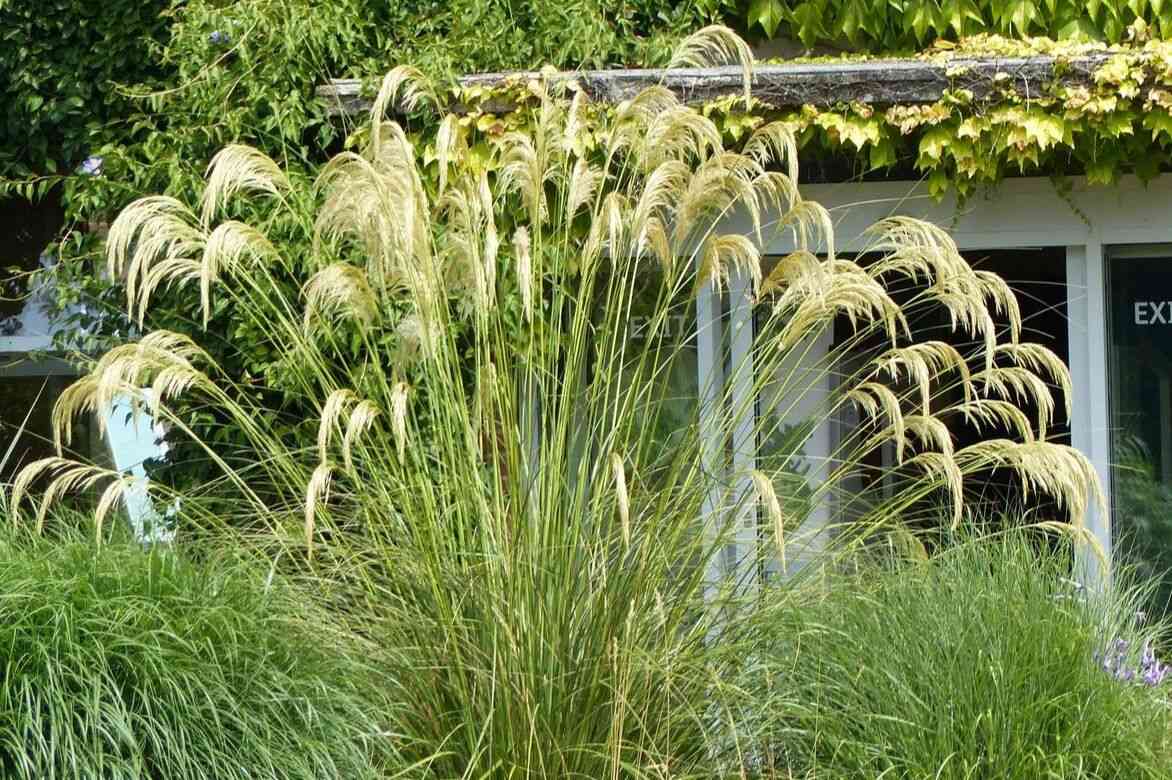
Cortaderia richardii : species smaller, more compact and earlier than C. selloana
Read also
Planting grassesPampas herb, an invasive plant in some regions
Very decorative, even spectacular, pampas grass has escaped gardens to colonise some of our coasts. Each clump can produce more than one million seeds contained in its flowering culms. Pollination is by wind and its particularly airborne seeds disperse over a radius of more than 25 km.
Originating from South America, it is highly invasive in mild climates here, readily colonising road verges and sandy habitats to the point of being now regarded in some coastal regions, notably Brittany but also in the English Channel, as an invasive plant, threatening native flora and thus biodiversity. It is gradually taking over territory and is now classed among invasive alien species (IAS).
In France, for the moment, it is not yet prohibited to produce and sell pampas grass, although such a ban is planned nationwide. If you live in an affected area, we recommend not planting it. It can be replaced by many ornamental grasses that are just as striking but non-invasive, such as miscanthus, stipa or pennisetum.
Care and Pruning of Pampas grass
Once well rooted, Pampa Herb proves very drought-resistant: water regularly during first year; thereafter water only during prolonged dry periods, as it prefers relatively cool soil in summer.
Cut flower spikes before they release their seeds to avoid invasive, unwanted sowings in garden Warning: do not put plumes in compost!
In regions with very cold winters, protect clump from frost with organic mulch (pale of flax…) or with its own foliage and cover all with winter fleece.
Pruning Pampa Herb
In February–March, simply cut back dry culms to about 50 cm above soil using hedge shear to make way for new leaves. Do not cut all foliage to ground level. Wear gloves!
Pampa Herb is unaffected by diseases and parasitic pests.
Multiplication
Pampas grass is an invasive alien species (IAS); we advise against propagating it.
Combining Pampas grass in the garden
Centrepiece of 1960s–80s gardens, with large plumes, pampas grass forms imposing, very exotic-looking clumps. It suits lush naturalistic garden scenes, where it brings scale, lightness and volume, and also fits the cleaner setting of a contemporary or urban garden. Also ideal for a windswept seaside garden exposed to salty air.
Can be planted close to the house, in modern mineral-style beds surrounded by white gravel.
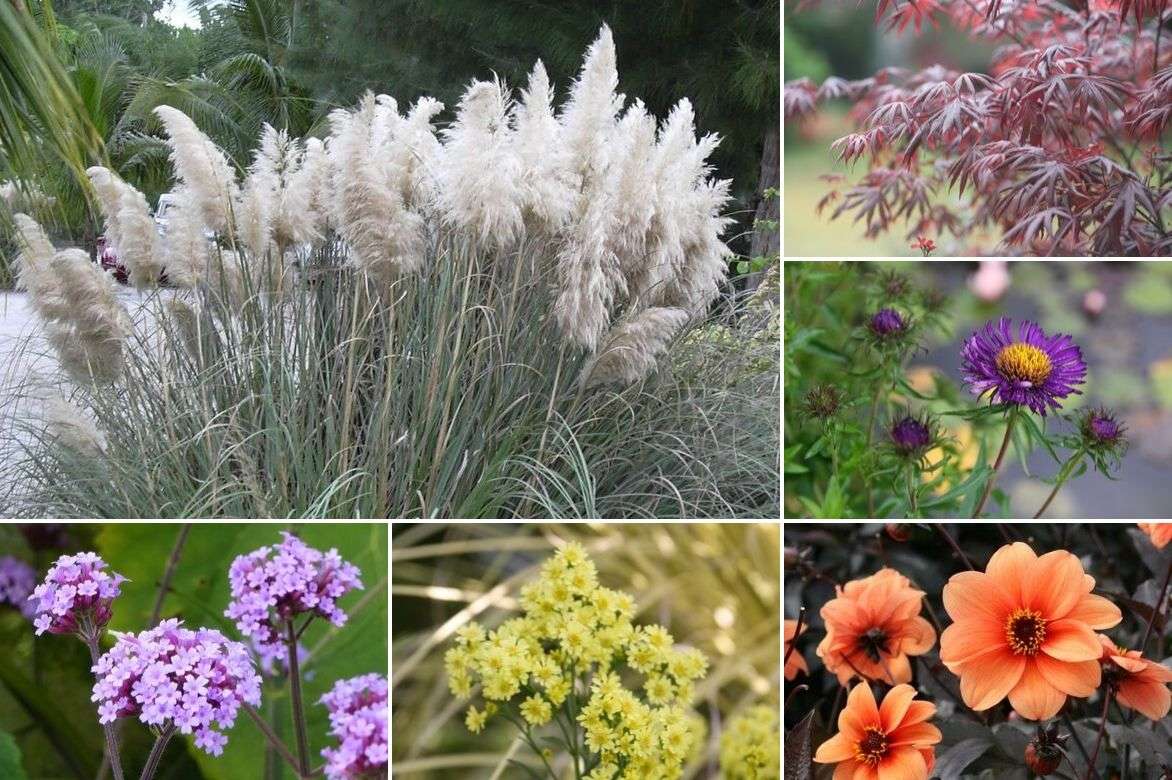
Another example of an autumnal combination: Cortaderia selloana, Acer palmatum ‘Trompenburg’, Aster novae-angliae ‘Violetta’, Dahlia ‘Catherine Deneuve’, Solidaster luteus (or variety ‘Lemore’) and Verbena bonariensis
Very architectural, this imposing grass, with its strong presence, helps structure large flower and bushy borders.
They form slender, tall tufts that add verticality; use them to play with textures and shapes. In a large, untamed bed place lower-growing plants at their base, such as alchemillas in company with other structural plants like Eremurus and Veronicastrum, and of course other plume-flowering, airy grasses such as Miscanthus, Stipa, Calamagrostis and Molina.
The tallest varieties are best used as specimens and at the back of flower beds, surrounded by tall flowering bulbs such as dahlias, and by numerous perennials to which they bring lightness and volume.
Create a superb late-summer scene by pairing it with perennials with summer or autumn flowering in beige and bronze tones such as autumn daisies, hardy chrysanthemums, asters, Echinacea, autumn sedums and evergreen grasses that tolerate drought.
You can plant it behind cotinus or behind perpetual roses.
You can also create a very natural area near a pond where it can accompany creeping conifers and vervonias.
Useful resources
- Graphic and airy, our grasses are essential for composing contemporary scenes and designing graphic gardens
- Find inspiration with all our tips on grasses
- Which varieties of grasses to choose, how to prune, plant and combine them, discover all our advice on our blog!
- Discover Christine’s article on the plumed inflorescences
- Discover hard-to-kill grasses
- Subscribe!
- Contents
































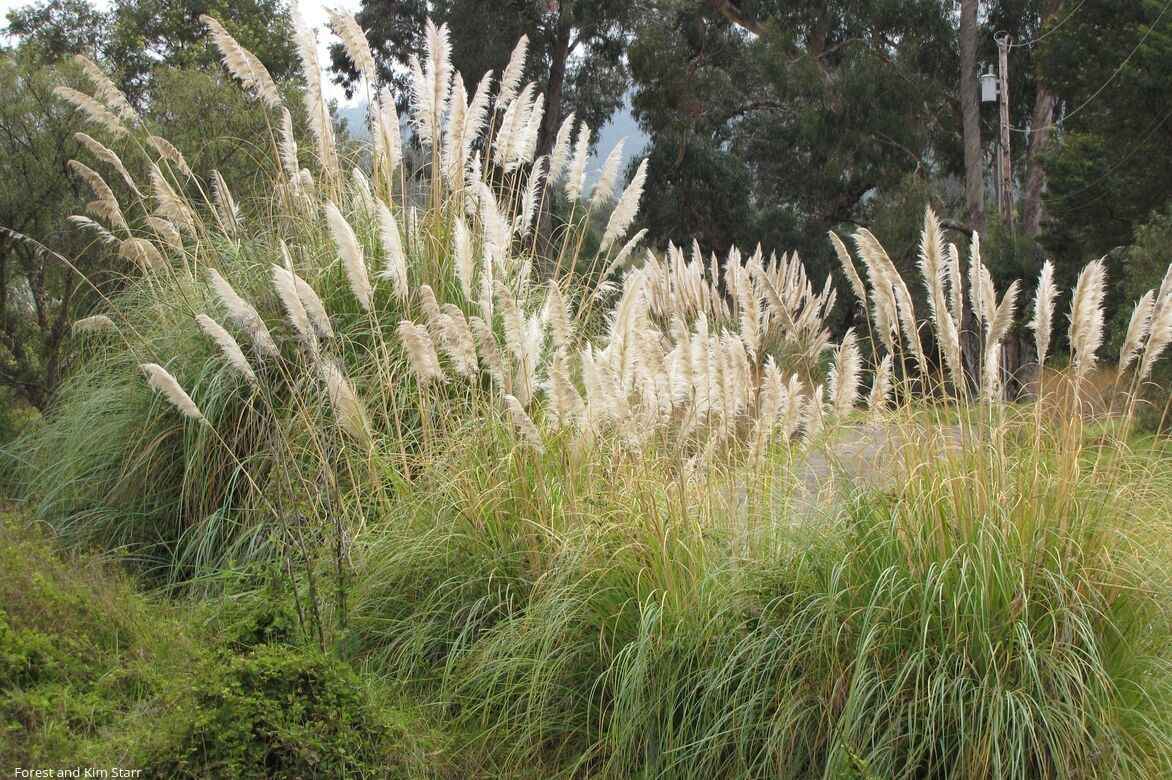

Comments